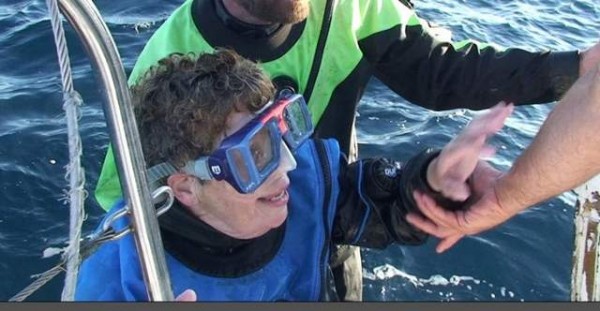Diver caught adrift more than 3 hours

Adrift and unseen in the Atlantic Ocean 60 miles off Monmouth County, lost diver Sally Wahrmann floated with her survival equipment for more than three hours while fish swarmed around – little triggerfish flanking her like a police escort, gold-colored mahi swooping past, a pair of dusky sharks lurking below.
“For the first half-hour, all I was doing was kicking like hell to get to the boat. In my mind, I thought they were looking for me,” recalled Wahrmann, who was swept away by current 100 feet down on her way to the Texas Tower wreck – the remains of a radar platform that collapsed in a January 1961 storm and killed 28 Air Force men.
“It could have happened to any of us,” said Aberdeen resident Maureen Langevin of Dive Voyager Expeditions. She and her husband, Stephen, organized the Texas Tower expedition with Hank Garvin, who runs the dive boat Garloo out of Captree on Long Island. “She did all the right things as a diver, and Hank did all the right things as captain.”
“I saw the wreck. Visibility was quite good. I saw Maureen’s video light,” Wahrmann said. The diver below her let go of the line, and Wahrmann did too, turning on her video camera.
Then suddenly, “there was no wreck, no line, no nothing,” she said.
Wahrmann realized she was caught in a current and began what divers call a drift decompression, easing her way up slowly to avoid the potentially deadly bubbling of gases in body tissue. Her little diver’s computer recommended pausing at 70 feet deep to complete decompression.
Back on the Garloo, Maureen Langevin climbed back on board and asked, “Where’s Sally?”
Within 20 minutes, two more divers were in the water to search deep, while Garvin multitasked with the Coast Guard on the radio and plotting his own search pattern. With the prospects slim for getting a helicopter to the scene before 7 p.m., the crew got ready to search on the surface.
The divers said the incident points out the difficulty of finding a person at sea, even in relaitvely good conditions. Wahrman figures she was never more than one nautical mile from the boat, but even at that distance she was invisible in the glare. Some divers carry the “survival sausage,” an inflatable bright-orange tube more than 6 feet long that can be waved overhead.
Langevin said the incident has her thinking about signaling mirrors – shiny steel plates with an aiming hole in the center, often issued to airmen and sailors in the days before electronic beacons and the Global Positioning System. “They’ve rescued people out of jungles with signal mirrors,” she said.
Wahrmann came back on Garloo to cheers and hugs. “Divers are like that,” she said. “They care for each other.”
Shortlink:
